Formula C2H7NO3S Melting point 305.1 °C Classification Sulfonic acid | Molar mass 125.15 g/mol Density 1.73 g/cm³ | |
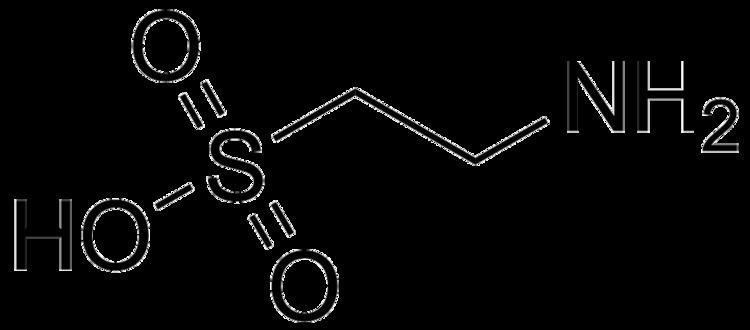 | ||
IUPAC ID 2-aminoethanesulfonic acid | ||
What is taurine and why s it in my energy drink
Taurine (/ˈtɔːriːn/), or 2-aminoethanesulfonic acid, is an organic compound that is widely distributed in animal tissues. It is a major constituent of bile and can be found in the large intestine, and accounts for up to 0.1% of total human body weight. Taurine has many fundamental biological roles, such as conjugation of bile acids, antioxidation, osmoregulation, membrane stabilization, and modulation of calcium signaling. It is essential for cardiovascular function, and development and function of skeletal muscle, the retina, and the central nervous system. Taurine is unusual among biological molecules in being a sulfonic acid, while the vast majority of biologically occurring acids contain the more weakly acidic carboxyl group. While taurine is sometimes called an amino acid, and indeed is an acid containing an amino group, it is not an amino acid in the usual biochemical meaning of the term, which refers to compounds containing both an amino and a carboxyl group.
Contents
- What is taurine and why s it in my energy drink
- Amix caffeine with taurine
- Synthesis
- Biosynthesis
- Nutritional significance
- Energy drinks
- Magnesium taurate
- Physiological functions
- Safety and toxicity
- In animal nutrition
- Prematurely born infants deficiency risk
- In cosmetics and contact lens solutions
- Derivatives
- See also
- References
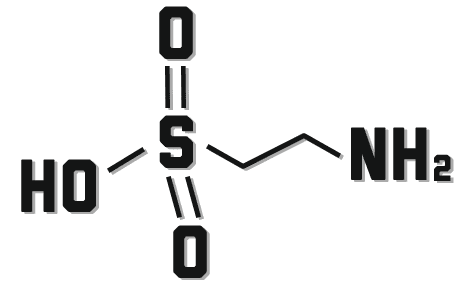
Taurine is named after the Latin taurus (a cognate of the Greek ταῦρος) which means bull or ox, as it was first isolated from ox bile in 1827 by German scientists Friedrich Tiedemann and Leopold Gmelin.
Amix caffeine with taurine
Synthesis
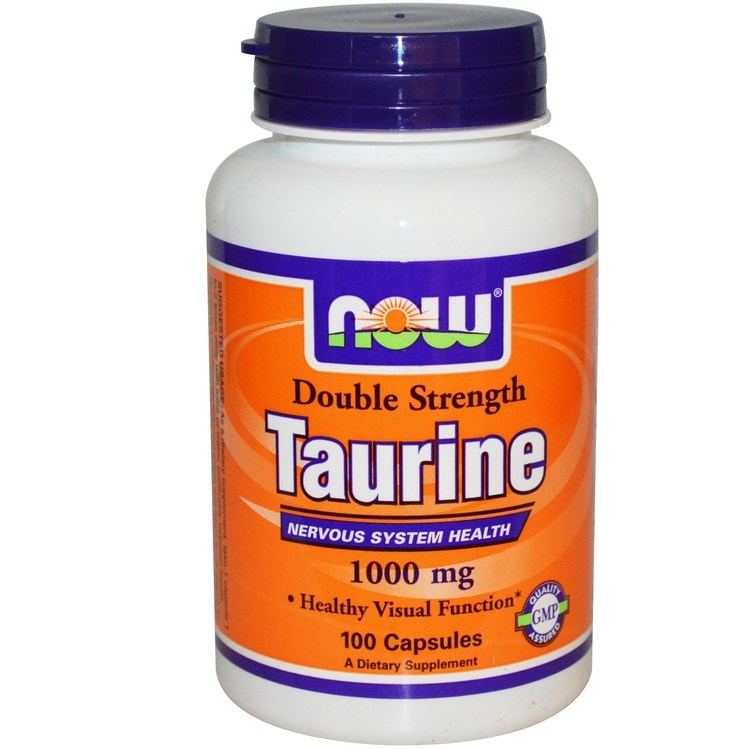
Synthetic taurine is obtained by the ammonolysis of isethionic acid (2-hydroxyethanesulfonic acid), which in turn is obtained from the reaction of ethylene oxide with aqueous sodium bisulfite. A direct approach involves the reaction of aziridine with sulfurous acid.
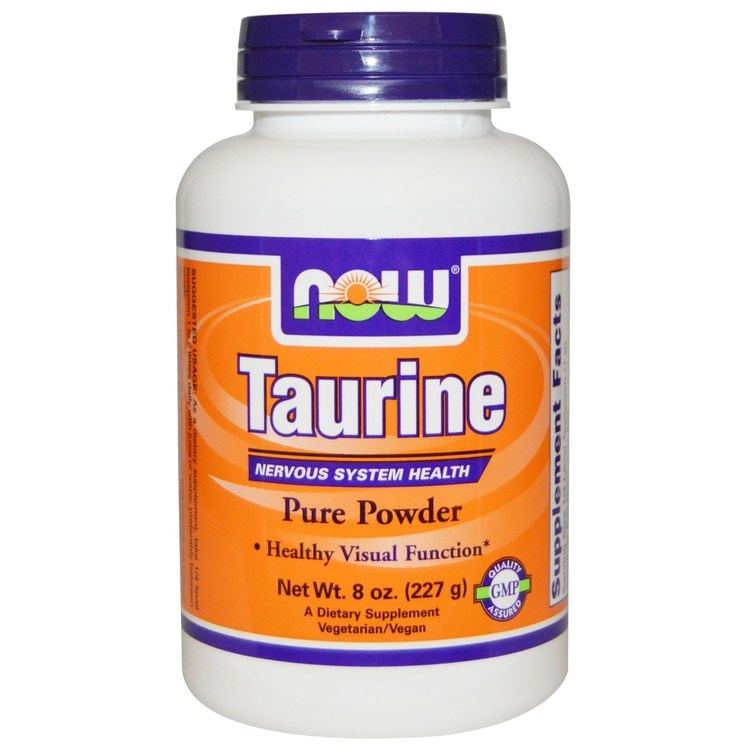
In 1993, about 5,000–6,000 tons of taurine were produced for commercial purposes: 50% for pet food and 50% in pharmaceutical applications. As of 2010, China alone has more than 40 manufacturers of taurine. Most of these enterprises employ the ethanolamine method to produce a total annual production of about 3,000 tons.
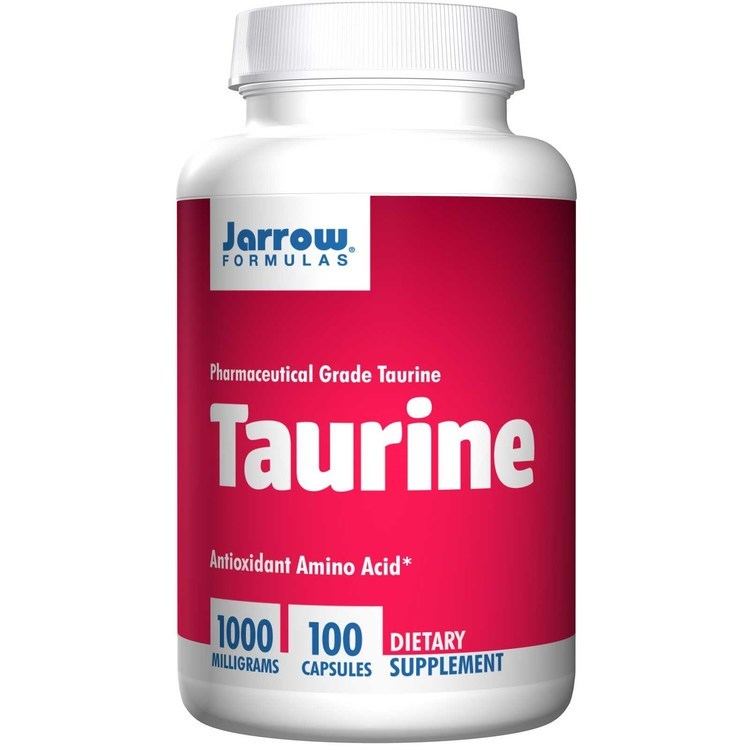
Taurine is produced by the Transsulfuration pathway which converts homocysteine into cystathionine. The cystathionine is then used by the Cystathionine gamma-lyase CTH, Cysteine dioxygenase CDO, and Cysteine sulfinic acid decarboxylase CSAD gene enzymes to produce hypotaurine and then taurine.
In the laboratory taurine can be produced by alkylation of ammonia with bromoethanesulfonate salts.
Biosynthesis
Taurine is derived from cysteine, the amino acid that contains a thiol group. Mammalian taurine synthesis occurs in the pancreas via the cysteine sulfinic acid pathway. In this pathway, the thiol group of cysteine is first oxidized to cysteine sulfinic acid by the enzyme cysteine dioxygenase. Cysteine sulfinic acid, in turn, is decarboxylated by sulfinoalanine decarboxylase to form hypotaurine. Hypotaurine is enzymatically oxidized to yield taurine by hypotaurine dehydrogenase.
Nutritional significance
Taurine occurs naturally in fish and meat. The mean daily intake from omnivore diets was determined to be around 58 mg (range from 9 to 372 mg) and to be low or negligible from a strict vegan diet. In another study, taurine intake was estimated to be generally less than 200 mg/day, even in individuals eating a high-meat diet. According to another study, taurine consumption was estimated to vary between 40 and 400 mg/day.
Energy drinks
Taurine is an ingredient in energy drinks. Many contain 1000 mg per serving, and some as much as 2000 mg.
Magnesium taurate
Magnesium taurate, the magnesium salt of taurine, is a mineral supplement of magnesium.
Physiological functions
Taurine is essential for cardiovascular function, and development and function of skeletal muscle, the retina, and the central nervous system.
Taurine is conjugated via its amino terminal group with chenodeoxycholic acid and cholic acid to form the bile salts sodium taurochenodeoxycholate and sodium taurocholate. The low pKa of taurine's sulfonic acid group ensures this moiety is negatively charged in the pH ranges normally found in the intestinal tract, thus it improves the surfactant properties of the cholic acid conjugate.
Taurine crosses the blood–brain barrier and has been implicated in a wide array of physiological phenomena including inhibitory neurotransmission, long-term potentiation in the striatum/hippocampus, membrane stabilization, feedback inhibition of neutrophil/macrophage respiratory burst, adipose tissue regulation and possible prevention of obesity, calcium homeostasis, recovery from osmotic shock, protection against glutamate excitotoxicity and prevention of epileptic seizures.
It also acts as an antioxidant and protects against toxicity of various substances (such as lead and cadmium). Additionally, supplementation with taurine has been shown to prevent oxidative stress induced by exercise.
Taurine has been shown to reduce the secretion of apolipoprotein B100 and lipids in HepG2 cells. High concentrations of serum lipids and apolipoprotein B100 (essential structural component of VLDL and LDL) are major risk factors of atherosclerosis and coronary heart disease. Hence, taurine supplementation is possibly beneficial for the prevention of these diseases.
Dietary taurine has a blood cholesterol-lowering effect in young overweight adults. Furthermore, body weight also decreased significantly with taurine supplementation. These findings are consistent with animal studies.
Taurine has also been shown to help people with congestive heart failure by increasing the force and effectiveness of heart-muscle contractions.
Taurine levels were found to be significantly lower in vegans than in a control group on a standard American diet. Plasma taurine was 78% of control values, and urinary taurine was 29%.
In cells, taurine keeps potassium and magnesium inside the cell, while keeping excessive sodium out. In this sense, it works like a diuretic. Because it aids the movement of potassium, sodium, and calcium in and out of the cell, taurine has been used as a dietary supplement for epileptics, as well as for people who have uncontrollable facial twitches.
According to animal studies, taurine produces an anxiolytic effect and may act as a modulator or antianxiety agent in the central nervous system by activating the glycine receptor.
A study of mice hereditarily unable to transport taurine suggests it is needed for proper maintenance and functioning of skeletal muscles. In addition, it has been shown to be effective in removing fatty liver deposits in rats, preventing liver disease, and reducing cirrhosis in tested animals. Evidence indicates taurine may be beneficial for blood pressure in male rats. A single intravenous taurine supplementation resulted in measurable decreases in blood pressure. However, when rats were supplemented with taurine in their drinking water, only female rats showed an increase in blood pressure. Both genders showed significant tachycardia.
Taurine is necessary for normal skeletal muscle functioning. Mice with a genetic taurine deficiency had a nearly complete depletion of skeletal and cardiac muscle taurine levels and a reduction of more than 80% of exercise capacity compared to control mice. Taurine can influence (and possibly reverse) defects in nerve blood flow, motor nerve conduction velocity, and nerve sensory thresholds in experimental diabetic neuropathic rats.
In diabetic rats, taurine significantly decreased weight and decreased blood sugar. Likewise, taurine administration to diabetic rabbits resulted in 30% decrease in serum glucose levels. According to the single study on human subjects, daily administration of 1.5 g of taurine had no significant effect on insulin secretion or insulin sensitivity. There is evidence that taurine may exert a beneficial effect in preventing diabetes-associated microangiopathy and tubulointerstitial injury in diabetic nephropathy.
Taurine acts as a glycation inhibitor. Taurine-treated diabetic rats had a decrease in the formation of advanced glycation end products (AGEs) and AGEs content. The United States Department of Agriculture has found a link between cataract development and lower levels of vitamin B6, folate, and taurine in the diets of the elderly.
Taurine has been investigated in animal studies as an alternative to glucose as an osmotic agent for use in peritoneal dialysis solutions.
Safety and toxicity
Taurine is involved in a number of crucial physiological processes. However, its role in these processes is not clearly understood and the influence of high taurine doses on these processes is uncertain. A substantial increase in the plasma concentration of growth hormone was reported in some epileptic patients during taurine tolerance testing (oral dose of 50 mg per kg body mass per day), suggesting a potential to stimulate the hypothalamus and to modify neuroendocrine function. A 1966 study found an indication that taurine (2 g/day) has some function in the maintenance and possibly in the induction of psoriasis. Three later studies failed to support that finding. It may also be necessary to take into consideration that absorption of taurine from beverages may be more rapid than from foods.
Taurine has an observed safe level of supplemental intake in normal healthy adults at up to 3 g/day. Even so, a study by the European Food Safety Authority found no adverse effects for up to 1,000 mg of taurine per kilogram of body weight per day.
A review published in 2008 found no documented reports of negative or positive health effects associated with the amount of taurine used in energy drinks, concluding, "The amounts of guarana, taurine, and ginseng found in popular energy drinks are far below the amounts expected to deliver either therapeutic benefits or adverse events".
In animal nutrition
Taurine is an essential dietary requirement for feline health, since house cats (and all members of the cat family) cannot synthesize the compound. The absence of taurine causes a cat's retina to slowly degenerate, causing eye problems and (eventually) irreversible blindness – a condition known as central retinal degeneration (CRD), as well as hair loss and tooth decay. Decreased plasma taurine concentration has been demonstrated to be associated with feline dilated cardiomyopathy. Unlike CRD, the condition is reversible with supplementation. Taurine is now a requirement of the Association of American Feed Control Officials (AAFCO) and any dry or wet food product labeled approved by the AAFCO should have a minimum of 0.1% taurine in dry food and 0.2% in wet food.
Research suggests taurine is essential to the normal development of passerine birds. Many passerines seek out taurine-rich spiders to feed their young, particularly just after hatching. Researchers compared the behaviors and development of birds fed a taurine-supplemented diet to a control diet and found the juveniles fed taurine-rich diets as neonates were much larger risk takers and more adept at spatial learning tasks.
Prematurely born infants deficiency risk
Prematurely born infants are believed to lack the enzymes needed to convert cystathionine to cysteine, and may, therefore, become deficient in taurine. Taurine is present in breast milk, and has been added to many infant formulas, as a measure of prudence, since the early 1980s. However, this practice has never been rigorously studied, and as such it has yet to be proven to be necessary, or even beneficial.
In cosmetics and contact lens solutions
Since the 2000s cosmetic compositions containing taurine have been introduced, possibly due to its antifibrotic properties. It has been shown to prevent the damaging effects of TGFB1 to hair follicles. It also helps to maintain skin hydration.
Taurine is also used in some contact lens solutions.
